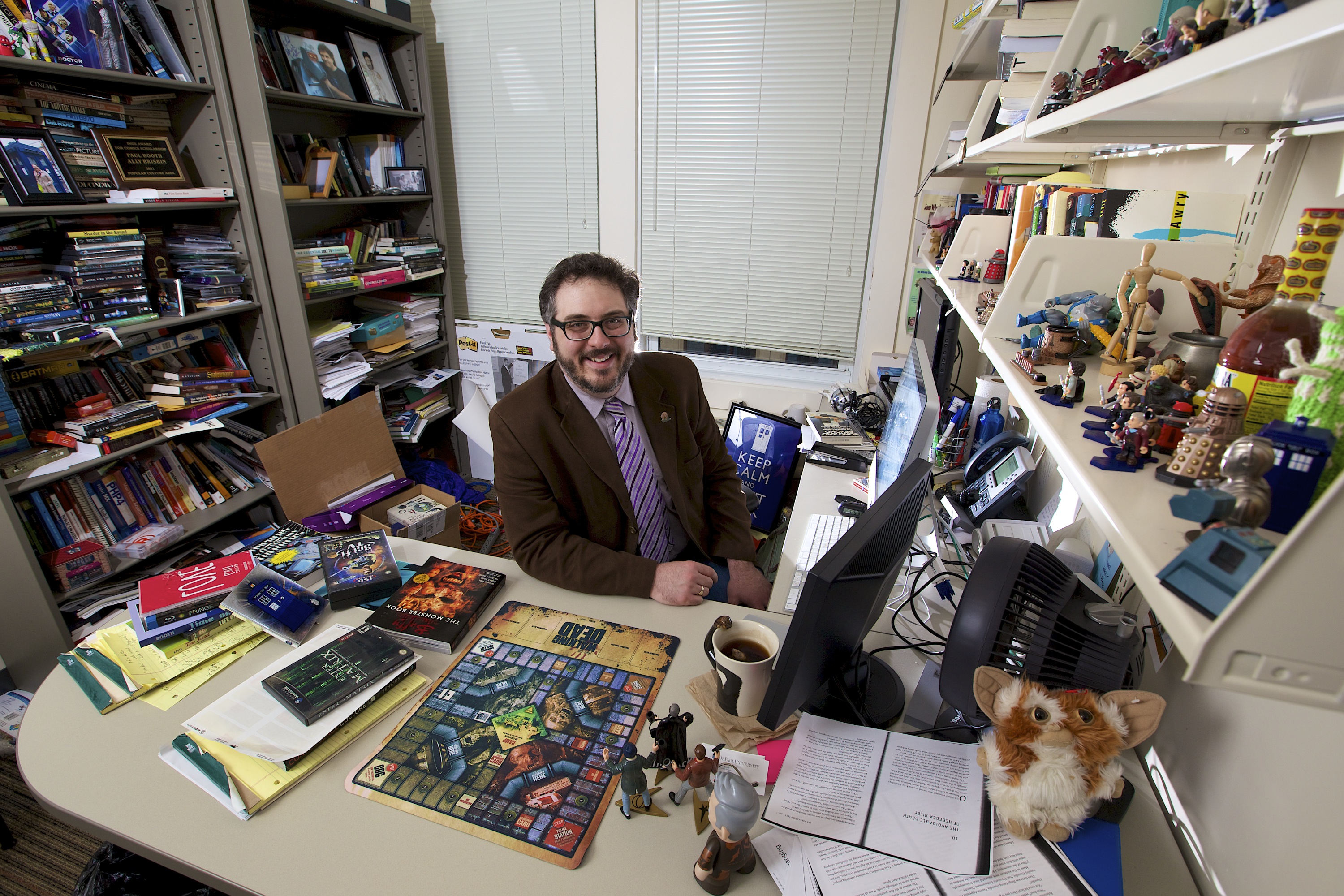 Paul Booth, a professor of media and cinema studies in the College of Communication, researches fandom, new media, games, technology, popular culture and cultural studies. (DePaul University/Jeff Carrion)
Paul Booth, a professor of media and cinema studies in the College of Communication, researches fandom, new media, games, technology, popular culture and cultural studies. (DePaul University/Jeff Carrion)Fandoms have played a pivotal role in Paul Booth’s professional and personal lives. A professor of media and cinema studies in the College of Communication, his research focuses on fandoms, games, technology, new media, and popular and cultural studies.
“I’ve been a fan of many things since I was a kid, and it’s something I ended up studying and teaching about. It’s important to me both personally and professionally,” Booth says.
At DePaul, Booth teaches classes in media studies, television narrative, convergence and digital media, board games, popular culture, social media, communication technology, and participatory cultures. He is the author or editor of 10 books, including the “Wiley Companion to Media Fandom and Fan Studies” and “Crossing Fandoms: SuperWhoLock and the Contemporary Fan Audience.”
In this Q&A, Booth discusses the ways people have been virtually engaging with each other while practicing social distancing, the central role fandoms have played in people’s engagement, and why people are re-watching their favorite classic movies and TV shows.
How has social distancing affected how people have been able to engage with each other?
One of the interesting things about social distancing is it’s much more about physical distancing than it is about social distancing. I don’t know if other people have felt this way, but I’ve been more social during this kind of shelter in place than I have been in years. This includes things as simple as a phone call with someone I haven’t talked with in a while or video calls with friends from around the world.
What are some of the ways people are using technology and entertainment to stay engaged? What role, if any, does fandom play in this?
I’ve seen a lot of different ways people have been using entertainment to stay engaged. Playing online board or video games, like Jackbox games, have been two big trends.
Talking about fandoms, specifically, one cool thing I’ve seen has been a rise in live tweet sessions, and group viewings of movies or TV shows. Fans are not only interacting live on Twitter, but media creators are creating new content to live tweet along with it. It’s been these fan groups that have come together in a lot of ways to show a community sense or a feeling of community through this whole thing. I’ve seen this happen across several fandoms, including fandoms for “Doctor Who,” “Hannibal,” “Twin Peaks” and “Star Trek.” It all happened around the same time we all became stuck inside, but realized we could press play at the same time on our individual devices and tweet along.
I also find it interesting how media creators and distribution companies have gotten involved. Since “Doctor Who” is my big fandom, I participated in an event where Amazon made the episode free for the day. In some ways that helped people participate if they didn’t already own the episode or didn’t want to pay.
The fandoms you mentioned are classic favorites. Why do you think people are returning to classic TV shows and movies?
Whenever people feel stressed, or so much "new" is happening, returning to classic favorites is a comfort in some ways. The choice of which episode to live stream also is a good indication of well-loved episodes people have seen hundreds of times, but are now seeing them in a new way. The classics bring a sense of normality to what is a very abnormal situation, especially for those people who are socially isolated. It’s a way to form a community through all of this - fandoms are often very tight knit and socially important communities for people.
Do you think there’s been any positive impact for people during this stay at home order?
This pandemic has been hard on everyone and a lot of people have suffered. But I have been encouraged by how many people have reconnected with the hobbies they used to love and have found things that engage them in ways that make them feel better. That’s an important part of life, and of being human.